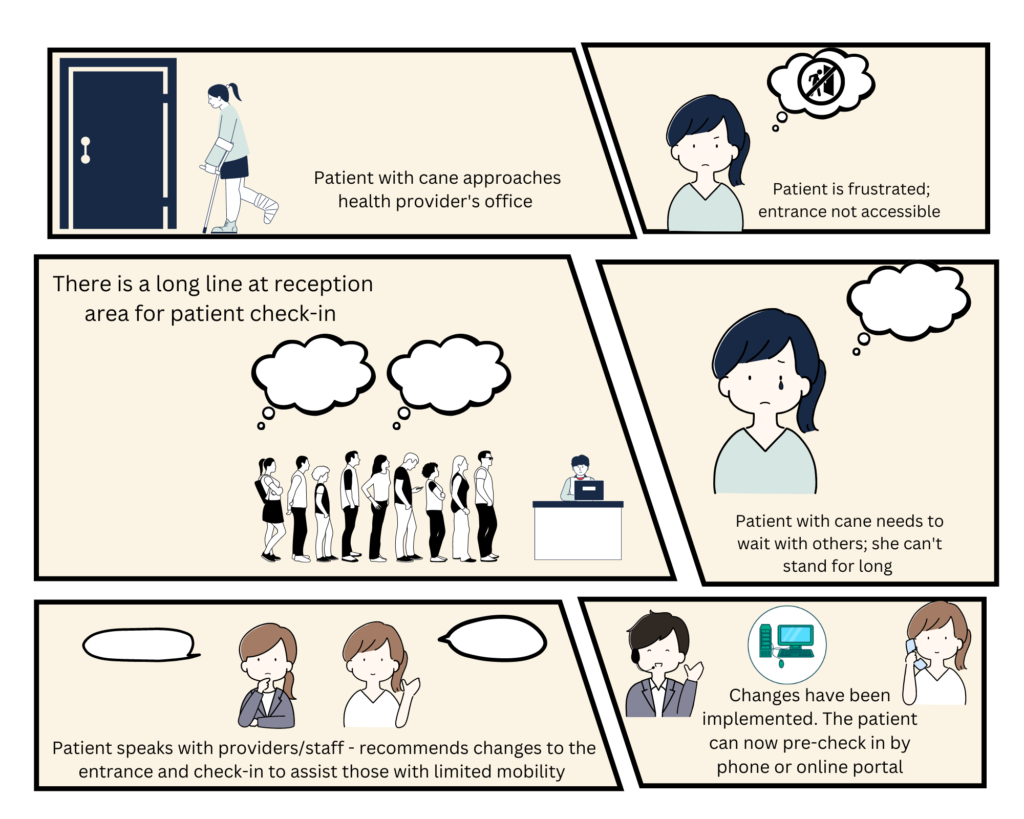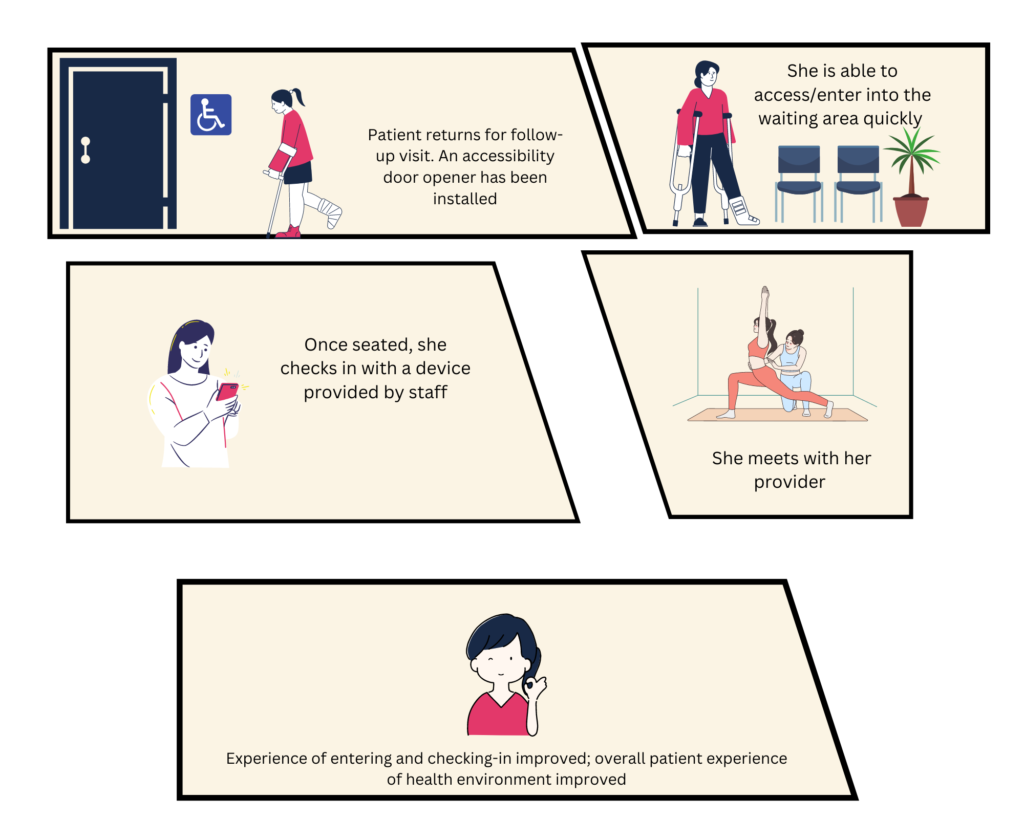In my interactions with patients, I’ve discovered that various challenges related to healthcare, such as navigating settings, accessing services, or understanding healthcare processes, can create a sense of alienation or insignificance for them. These conversations serve as powerful reminders of the critical need for healthcare organizations to prioritize people above all else. The concept of “people first” is central to inclusive design.
Inclusive design is a design approach that aims to enhance usability and accessibility for all patients, especially those who have historically been excluded or overlooked. It emphasizes creating products, services, or environments that cater to diverse needs, ensuring that everyone feels valued and included in the healthcare experience.
Approach: For this project, I aimed to expand upon my previous research, delving into patient health experiences and their correlation with clinical environments. My specific focus was on inclusive design and the integration of Diversity, Equity, and Inclusion (DEI) principles into both physical spaces and care practices to enhance the experiences of a diverse range of patients. As a strategic approach, I sought to assess the various steps comprising the patient experience within clinical settings.
Design opportunity: To identify potential design opportunities, I conducted in-depth interviews, including one with a participant facing limited mobility. The insights gathered from this particular interview served as the foundation for developing initial data, initiating the process of storyboarding design concepts. Subsequently, I created two storyboards, which I presented to other patients for feedback. This feedback proved instrumental in refining and advancing my conceptual ideas.


I experimented with two storyboarding approaches, both which I presented during a feedback gathering session. The graphic narrative approach, featured above, was deemed more “relatable” by participants who reviewed the storyboards.
I relied on feedback from patients to refine my idea and to communicate my revised vision.
The Design Proposal
My design proposal adopted the following approach:
- Frame: Define the scope of the design problem by establishing boundaries.
- Sense: Gain a deep understanding of the problem by engaging with users and experiencing it firsthand.
- Make: Develop a design solution by synthesizing and applying insights gathered from user interactions.
- Reflect: Utilize an iterative approach to continually refine and enhance the design solution based on feedback and evaluation.
- Deliver: Share the refined design concept, ensuring it aligns with the improved user experience.